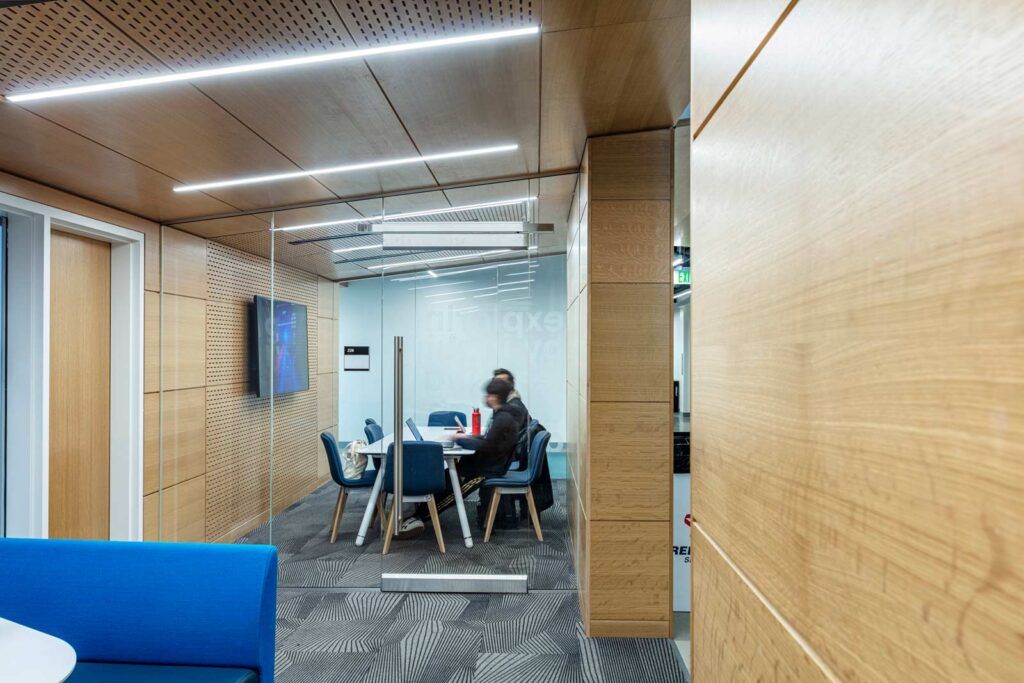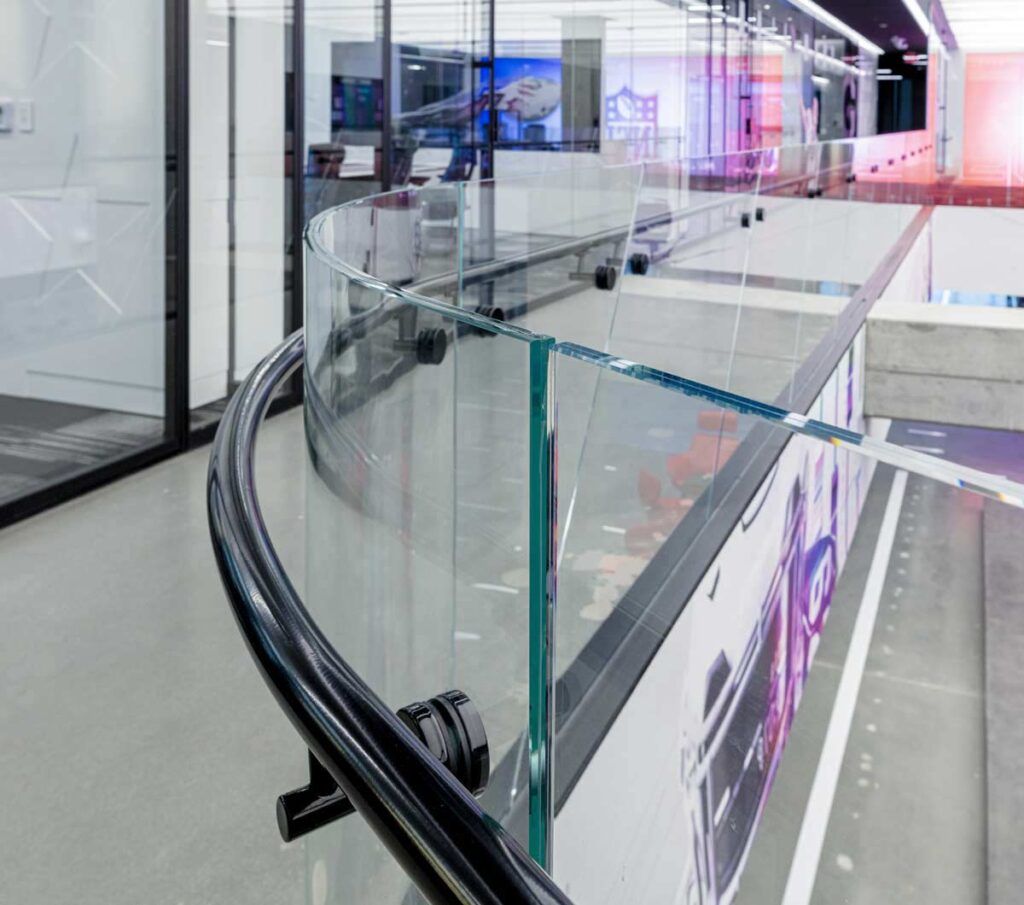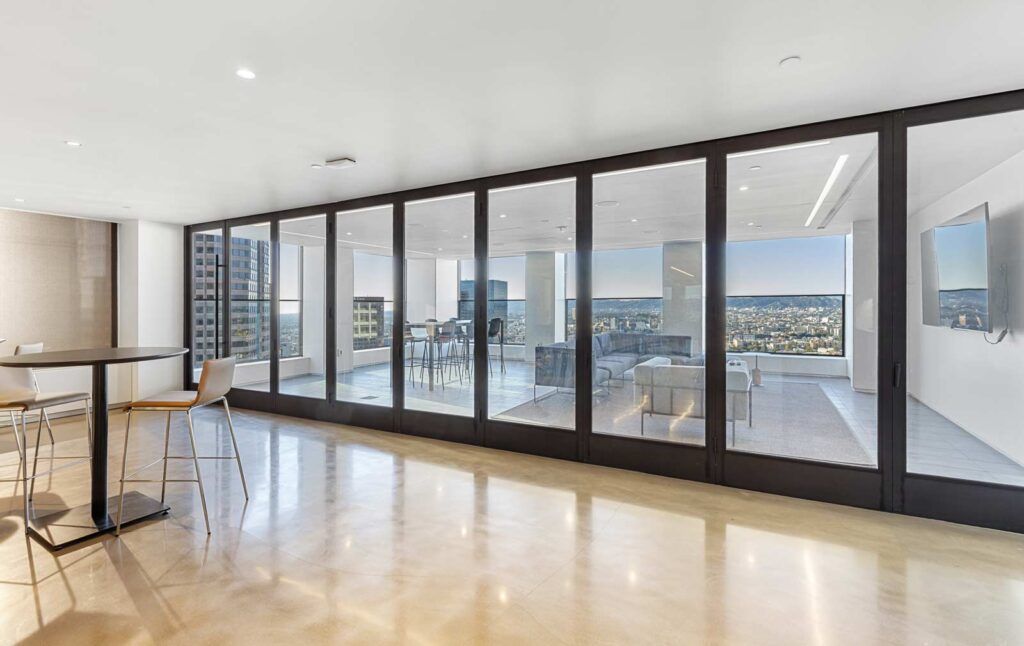
Many companies are currently renovating their commercial office spaces to entice employees back to the office rather than having them continue to work from home.
Office attendance has stabilized at about 30% below pre-pandemic norms. In the construction industry, as of October 2022, office workers were visiting the office about 3.65 days per week. That may be due not as much to mandates by employers, but rather, to the preferences of employees who have become accustomed to not commuting to an office. Many employers hope to increase employees’ time spent in the office.
Renovating your office space can play a big role in helping convince employees to come back to the office, as well as improve the work experience for everyone. Many employees complain about a lack of privacy, noise distractions, and poor lighting in their offices. Offering employees an attractive, well-designed workspace can provide remote workers with a more desirable workplace alternative than home offices and coffee shops. It also helps create a stronger company culture and improves productivity.
Glass is one of the most common materials used in office design and renovations. It serves multiple practical functions and provides a contemporary look while allowing ample natural light to fill the space.

Enhancing Office Spaces with Glass
- Glass walls can come in many forms: full height or partial height, folding, demountable, and more. They can also be customized with designs and art and used as writable or projectable surfaces. They can also be adjusted for visual privacy and soundproofing.
- Mirrors can make an office feel more spacious. Beyond checking one’s appearance in the bathroom, mirrors can enhance many areas of office space, including elevators, lobbies, and entrance areas.
- Glass doors can slide or swing to operate. Making doors out of glass can improve safety, as it is easier to see if someone is on the other side, preventing the risk of hitting someone when opening the door. An office hallway between rows of offices with glass doors will be better lit than one between offices with wooden doors.
- Glass partitions and panels can be excellent alternatives to entire walls, especially in cubicle settings. They are also useful for flexible and modular office spaces, especially to accommodate the changing schedules of the new reality of a hybrid workforce. Smart glass and custom laminated glass or film can also provide privacy by making portions of the glass opaque when required.
- Glass stairway railings are important for safety. Making handrails and guardrails from glass makes them less obtrusive, and maintains the perception of an open, airy space.
- Glass cabinets, tabletops, and other furniture are often made of glass to reduce the sense of physical clutter in a space while providing surfaces that are more sanitary and easy to clean.

Benefits of Glass in Office Renovations
The use of glass in office renovations provides several major benefits. The most obvious is the abundant filtration of natural light. Natural light boosts productivity, energy levels, and overall well-being. Accredited LEED designer Sayyara Rustamov from Unisource Solutions, states: “The transformative power of glass in office renovations makes it a designer’s dream. From enhancing natural light flow to creating a sense of openness and fostering collaboration, glass is truly a game-changer in office design. Moreover, the sustainability aspect of glass aligns perfectly with the global shift towards environmentally responsible design.” It also reduces reliance on artificial lighting, which can decrease energy costs. Additionally, glass can create a sense of openness and transparency in the office, promoting collaboration and communication among employees.
“The transformative power of glass in office renovations makes it a designer’s dream. From enhancing natural light flow to creating a sense of openness and fostering collaboration, glass is truly a game-changer in office design. Moreover, the sustainability aspect of glass aligns perfectly with the global shift towards environmentally responsible design.”
–Sayyara Rustamov, LEED Accredited Senior Designer, Unisource Solutions
Glass also offers design flexibility, allowing for customization and creativity. It can be used to add visual interest and character to an otherwise dull space. Additionally, glass can also improve the acoustics in an office by minimizing noise distractions while still maintaining a sense of connection to the rest of the office.
Finally, by incorporating glass into office renovations, companies can demonstrate their commitment to sustainability and environmental responsibility. Glass is highly recyclable and can contribute to LEED certification for green buildings.

Designing with Glass to Enhance Workplace Aesthetics and Functionality
There are many types of glass to consider in workplace renovations, particularly for the trend toward hybrid offices. In addition to clear and tinted glass, some additional options available include:
- Frosted or sandblasted glass
- Patterned glass
- Colored glass
- Painted glass
- Switchable glass
- Digitally printed glass
- Laminated glass with customized inner layers
Incorporating glass into hybrid office renovations requires thoughtful planning and strategic design. Glass partitions can be utilized to create individual workspaces or meeting areas that still maintain an open and connected feel, essential for promoting collaboration among employees who may not always be working simultaneously at the office. Switchable glass, in particular, offers a dynamic solution, allowing spaces to shift from transparent to opaque according to the needs of privacy. Glass doors and walls can be strategically placed to maximize natural light penetration, ensuring a well-lit and energetic environment for both in-office and remote workers participating through video calls. Additionally, the use of laminated or digitally printed glass can serve to reinforce company branding or provide visual interest, enhancing the aesthetic appeal of the workspace. Glass furniture, such as tabletops and cabinets, adds to the sense of spaciousness and modernity. Overall, the versatile nature of glass makes it an ideal choice for creating an adaptable, efficient, and inviting hybrid workspace.

Final Thoughts on Glass in Office Renovations
Glass is an invaluable building tool, and its use in commercial office renovations can help elevate a space into a well-designed and functional work environment. This creates a more attractive office that can entice remote or hybrid workers back to the workplace.
Using glass doors and windows provides several benefits, such as more natural light, and lower energy costs. There are many options available, including curved edges, sliding barn doors, and additional materials.
As with all design projects, be creative and seek professional recommendations. There are many options when it comes to choosing the ideal types of glass, where to install it, and how to blend it with other materials in your office renovation. Qualified designers can guide you through the myriad choices and help you meet your design goals.
Planning an office renovation? Contact our glass specialists to discuss how you can include glass in your plans.